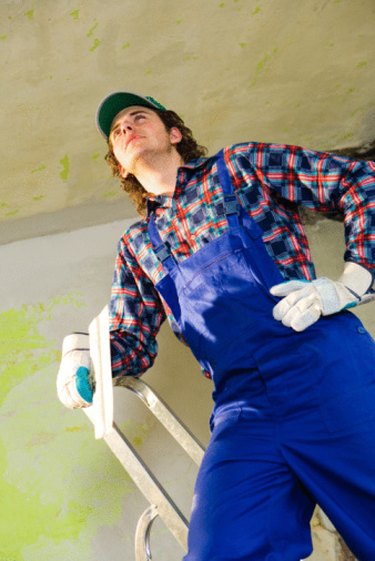
For hundreds of years, plaster was the exclusive way to finish interior walls in homes and offices. Skilled craftsmen applied the wet plaster to lath — strips of wood used as a solid base for the plaster. The combination of a housing boom and technological advances led to the use of factory-made drywall, which decreased the labor time and costs of finishing interior walls. While nearly all homes built in the past 50 years contain drywall, determining what type of walls are in your home is a relatively simple process.
Step 1
Push a thumbtack or pin into the wall in an inconspicuous spot to test its hardness. Drywall is softer and won't crack. Plaster is much harder. A plaster wall won't want to take the pin and will probably splinter.
Video of the Day
Step 2
Find an area in the home where you can see behind the walls or ceilings, perhaps an attic or basement. If you see lath and plaster pushing through, you know you have a plaster wall.
Step 3
Remove a switch plate and look at the electrical wiring. If the wiring is loose and you can see lath, your walls are plaster. If the wiring is enclosed by an electric box, your walls are most likely drywall.
Video of the Day